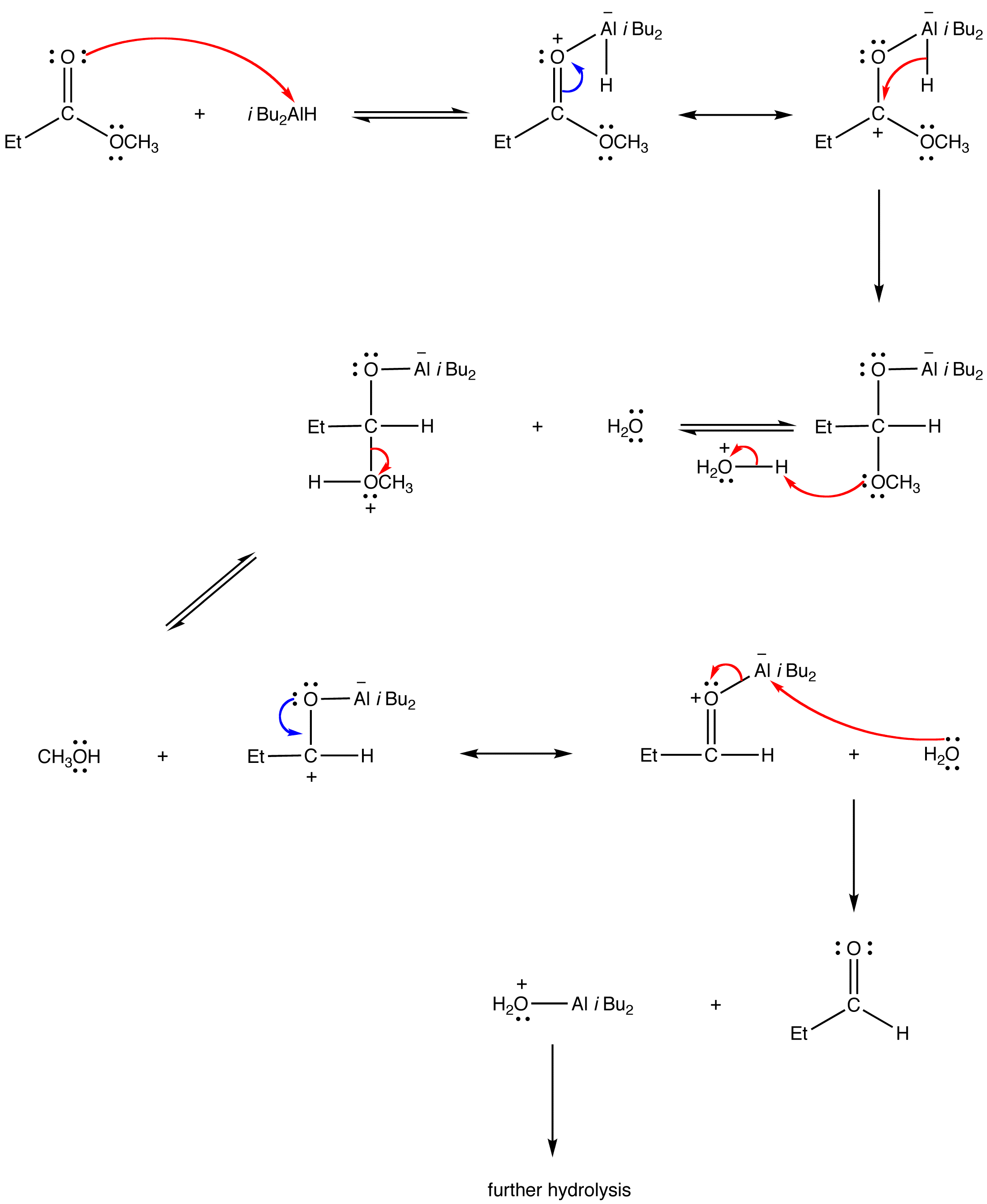Diisobutylaluminum Hydride
( \newcommand{\kernel}{\mathrm{null}\,}\)

DIBAL can be used to reduce many a functional group, but it is most commonly used to reduce carboxylic acid esters to aldehydes, which can not be done using lithium aluminumhydride, the traditional reducing agent used to reduce carbonyl compounds.
eg:

Mechanism:




